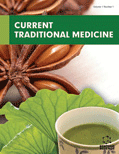
Abstract
Diosgenin (1) is an important steroidal metabolite often used as a precursor material for the synthesis of a broad array of steroidal drugs. Recent studies have indicated that compound (1) and many diosgenyl derivatives such as (1→9) possess both in vivo and in vitro biological activities like antioxidant, hypolipidemic, antithrombotic, immuno-modulatory, and estrogenic including anticancer activities. This steroidal sapogenin is of increasing interest in the pharmaceutical industry as it is being explored as an important starting material for the synthesis of oral contraceptives, sex hormones, and many other steroidal drugs having anticancer potential. Naturally occurring diosgenin, and its glucoside derivatives are quite abundant in several plant sources, but very little is known about the biogenesis of this class of secondary plant metabolites. Hence, designing a semi-synthetic protocol for the improved anticancer potential with enhanced efficacy of diosgenin and its derivatives is always a challenging field of cutting-edge research in pharmaceutical chemistry. The present review highlights some of the recent research findings and applications of this group of triterpenoids as a potential anticancer agent.
Keywords: Diosgenin, diosgenyl derivatives, bioavailability, biological activities, anticancer potential, steroidal sapogenin.
[PMID: 1459613]
[PMID: 20372792]
[http://dx.doi.org/10.1371/journal.pone.0020164] [PMID: 21629786]
[http://dx.doi.org/10.1016/j.ejmech.2015.05.018] [PMID: 26046314]
[http://dx.doi.org/10.1080/10286020.2016.1202240] [PMID: 27380052]
[http://dx.doi.org/10.1016/j.steroids.2016.11.003] [PMID: 27864018]
[PMID: 29383016]
[http://dx.doi.org/10.1271/bbb.70472] [PMID: 18071250]
[http://dx.doi.org/10.1021/jf201640j] [PMID: 21800902]
[http://dx.doi.org/10.3892/mmr.2016.5750] [PMID: 27667394]
[http://dx.doi.org/10.15835/nbha46110996]
[http://dx.doi.org/10.1016/j.phymed.2010.08.015] [PMID: 21036572]
[http://dx.doi.org/10.1021/np900690z] [PMID: 20465230]
[http://dx.doi.org/10.1016/S1028-4559(08)60077-7] [PMID: 18603503]
[http://dx.doi.org/10.1248/bpb.33.316] [PMID: 20118560]
[http://dx.doi.org/10.1016/j.foodchem.2011.11.016] [PMID: 26434311]
[http://dx.doi.org/10.1016/j.biochi.2014.03.011] [PMID: 24742379]
[http://dx.doi.org/10.1097/CEJ.0b013e32834a7f0c] [PMID: 21876437]
[http://dx.doi.org/10.1002/ijc.24419] [PMID: 19384950]
[http://dx.doi.org/10.1016/S1875-5364(15)30053-4] [PMID: 26253490]
[http://dx.doi.org/10.1016/j.canlet.2009.12.003] [PMID: 20053498]
[http://dx.doi.org/10.1016/j.canlet.2010.12.003] [PMID: 21195543]
[http://dx.doi.org/10.3724/SP.J.1009.2012.00142]
[http://dx.doi.org/10.1016/j.vph.2010.09.007] [PMID: 20932938]
[http://dx.doi.org/10.1080/01635580802357352] [PMID: 19116873]
[http://dx.doi.org/10.1080/10408398709527461] [PMID: 3308321]
[http://dx.doi.org/10.1016/0378-8741(91)90069-P] [PMID: 1809823]
[http://dx.doi.org/10.2174/0929867023369709] [PMID: 12173978]
[http://dx.doi.org/10.1016/j.steroids.2012.04.019] [PMID: 22575181]
[http://dx.doi.org/10.1039/C2NP20082A] [PMID: 23151898]
[http://dx.doi.org/10.1016/j.bmc.2004.11.031] [PMID: 15670922]
[http://dx.doi.org/10.1201/b13867]
[http://dx.doi.org/10.1055/s-2004-815467] [PMID: 14765305]
[http://dx.doi.org/10.15835/nsb213552]
[http://dx.doi.org/10.1007/s12298-013-0205-3] [PMID: 24554842]
[http://dx.doi.org/10.1007/s13659-014-0011-9] [PMID: 24859054]
[http://dx.doi.org/10.1016/j.bbamem.2012.12.010] [PMID: 23262192]
[http://dx.doi.org/10.3390/molecules161210631] [PMID: 22183887]
[http://dx.doi.org/10.3390/molecules23020454] [PMID: 29463020]
[http://dx.doi.org/10.1016/j.fitote.2004.11.008] [PMID: 15752624]
[http://dx.doi.org/10.5897/AJB2013.12191];
b) Wu ZG, Jiang W, Wei Y, Tao YH. New variety breeding of Dioscorea alata, cultivar. Zhongguo Zhongyao Zazhi 2015; 40(9): 1705-9.
[PMID: 26323133]
[http://dx.doi.org/10.1016/j.scienta.2004.06.004]
[http://dx.doi.org/10.1007/s10529-006-9276-3] [PMID: 17318334]
[http://dx.doi.org/10.3923/ajpp.2011.261.268]
[http://dx.doi.org/10.1007/s11816-009-0096-5]
[http://dx.doi.org/10.1016/j.phymed.2010.01.017] [PMID: 20176464]
[http://dx.doi.org/10.1021/np9702190]
[http://dx.doi.org/10.2306/scienceasia1513-1874.1989.15.139]
[http://dx.doi.org/10.1016/S0040-4020(00)01024-3]
[http://dx.doi.org/10.1016/j.jep.2017.12.004] [PMID: 29233733]
[http://dx.doi.org/10.1177/1934578X1300800311] [PMID: 23678801]
[http://dx.doi.org/10.1007/s12272-014-0413-6] [PMID: 24866061]
[http://dx.doi.org/10.1016/j.foodchem.2014.06.035] [PMID: 25053072]
[http://dx.doi.org/10.1002/jsfa.5882] [PMID: 23400896]
[PMID: 18047799]
[PMID: 15875671]
[PMID: 12227201]
[http://dx.doi.org/10.1016/j.phymed.2015.03.009] [PMID: 25981923]
[PMID: 21954559]
[PMID: 21875297]
[http://dx.doi.org/10.1002/jssc.201301341] [PMID: 24772456]
[http://dx.doi.org/10.1016/j.fct.2018.07.016] [PMID: 29990575]
[http://dx.doi.org/10.1080/14786410802624827] [PMID: 19521905]
[http://dx.doi.org/10.1016/0031-9422(92)80288-P] [PMID: 1368051]
[http://dx.doi.org/10.1002/pca.2560] [PMID: 25808861]
[http://dx.doi.org/10.1016/j.fitote.2012.04.024] [PMID: 22579841]
[http://dx.doi.org/10.1111/1750-3841.13068] [PMID: 26352003]
[PMID: 25272837]
[http://dx.doi.org/10.1248/cpb.55.308] [PMID: 17268107]
[http://dx.doi.org/10.1016/j.steroids.2006.04.005] [PMID: 16766007]
[PMID: 18072537]
[http://dx.doi.org/10.1016/0021-9150(79)90199-0] [PMID: 111685]
[PMID: 7501366]
[http://dx.doi.org/10.1016/j.bej.2009.07.006]
[http://dx.doi.org/10.1007/s13659-012-0014-3]
[http://dx.doi.org/10.1155/2016/4156293] [PMID: 28116217]
[http://dx.doi.org/10.1016/j.febslet.2007.11.021] [PMID: 18022396]
[http://dx.doi.org/10.4103/2231-0738.114870]
[http://dx.doi.org/10.1097/FJC.0000000000000308] [PMID: 26309100]
[http://dx.doi.org/10.1016/j.phymed.2014.04.005] [PMID: 24889525]
[http://dx.doi.org/10.1016/j.bmcl.2012.10.086] [PMID: 23153797]
[http://dx.doi.org/10.1016/j.jnutbio.2010.09.003] [PMID: 21292464]
[http://dx.doi.org/10.1016/S0006-2952(99)00212-9] [PMID: 10571242]
[http://dx.doi.org/10.1158/1055-9965.1392.13.8] [PMID: 15298963]
[http://dx.doi.org/10.3390/nu10050645] [PMID: 29783752]
[http://dx.doi.org/10.1016/j.phymed.2014.02.002] [PMID: 24656238]
[http://dx.doi.org/10.1016/S0140-6736(13)61903-0] [PMID: 24581682]
[http://dx.doi.org/10.2147/OTT.S226261] [PMID: 31806994]
[http://dx.doi.org/10.1007/s005350200137] [PMID: 12424567]
[http://dx.doi.org/10.1046/j.1365-2559.1999.00705.x] [PMID: 10469215]
[http://dx.doi.org/10.1016/j.pharmthera.2015.04.002] [PMID: 25850036]
[http://dx.doi.org/10.1097/PGP.0000000000000082] [PMID: 25083970]
[http://dx.doi.org/10.1111/jop.12115] [PMID: 24044615]
[http://dx.doi.org/10.1186/1479-5876-11-142] [PMID: 23758705]
[http://dx.doi.org/10.1007/s13277-015-3808-1] [PMID: 26245990]
[http://dx.doi.org/10.3892/ijo.2014.2559] [PMID: 25069850]
[PMID: 24551295]
[http://dx.doi.org/10.1007/s00428-013-1473-6] [PMID: 23995871]
[http://dx.doi.org/10.1002/jso.23109] [PMID: 22488197]
[http://dx.doi.org/10.1186/1756-8722-5-15] [PMID: 22475564]
[http://dx.doi.org/10.3892/ijo.22.4.899] [PMID: 12632085]
[http://dx.doi.org/10.1016/S1875-5364(15)30040-6] [PMID: 26073343]
[http://dx.doi.org/10.1016/S1875-5364(14)60023-6] [PMID: 24636066]
[http://dx.doi.org/10.1055/s-2007-967169] [PMID: 17566144]
[http://dx.doi.org/10.1038/s41419-018-1099-3] [PMID: 30305604]
[http://dx.doi.org/10.1155/2019/5763602]
[http://dx.doi.org/10.3390/molecules21060730] [PMID: 27271587]
[http://dx.doi.org/10.1007/s11596-014-1243-y] [PMID: 24496691]
[http://dx.doi.org/10.1016/j.phymed.2016.01.012] [PMID: 26969381]
[http://dx.doi.org/10.1016/j.fct.2013.07.012] [PMID: 23871826]
[http://dx.doi.org/10.4161/cbt.13.3.18693] [PMID: 22231406]
[http://dx.doi.org/10.7150/ijbs.18732] [PMID: 28656003]
[http://dx.doi.org/10.1016/j.ejphar.2014.04.018] [PMID: 24755146]
[http://dx.doi.org/10.1016/j.ejphar.2016.02.009] [PMID: 26849940]
[http://dx.doi.org/10.1007/s10495-014-0994-z] [PMID: 24771279]
[http://dx.doi.org/10.1002/pmic.201300101] [PMID: 24420967]
[PMID: 28435431]
[http://dx.doi.org/10.3892/or.2012.1962] [PMID: 22895655]
[http://dx.doi.org/10.3748/wjg.v17.i39.4389] [PMID: 22110264]
[http://dx.doi.org/10.1007/s00204-013-1047-z] [PMID: 23552851]
[http://dx.doi.org/10.1038/srep28403] [PMID: 27329817]
[http://dx.doi.org/10.1007/s00210-018-1484-6] [PMID: 29594316]
[http://dx.doi.org/10.31024/ajpp.2019.5.4.22]
[http://dx.doi.org/10.7314/APJCP.2013.14.11.6945] [PMID: 24377630]
[http://dx.doi.org/10.1038/srep29673] [PMID: 27406916]
[http://dx.doi.org/10.1016/j.oraloncology.2008.05.016] [PMID: 18674954]
[http://dx.doi.org/10.1248/bpb.b14-00122] [PMID: 25177028]
[http://dx.doi.org/10.3892/or.2014.3629] [PMID: 25434486]
[http://dx.doi.org/10.1016/j.bbrc.2018.07.022] [PMID: 30005871]
[http://dx.doi.org/10.1073/pnas.1607590113] [PMID: 27335465]
[http://dx.doi.org/10.1021/np400071c] [PMID: 23621869]
[http://dx.doi.org/10.1016/j.bcp.2012.10.012] [PMID: 23103562]
[http://dx.doi.org/10.1016/j.jsbmb.2019.105573] [PMID: 32017993]
[http://dx.doi.org/10.1007/s12272-013-0279-z] [PMID: 24263408]
[http://dx.doi.org/10.1152/physrev.00036.2009] [PMID: 20086078]
[http://dx.doi.org/10.1016/j.canlet.2007.04.011] [PMID: 17555873]
[http://dx.doi.org/10.1158/1940-6207.CAPR-10-0279] [PMID: 21367960]
[http://dx.doi.org/10.1016/j.taap.2014.07.026] [PMID: 25111127]
[http://dx.doi.org/10.1158/1535-7163.MCT-08-0124] [PMID: 18644991]
[http://dx.doi.org/10.1128/MMBR.00031-10] [PMID: 21372320]
[http://dx.doi.org/10.1007/s11033-014-3505-y] [PMID: 24973886]
[http://dx.doi.org/10.1016/j.phymed.2016.01.010] [PMID: 26969378]
[http://dx.doi.org/10.1007/s10529-016-2102-7] [PMID: 27099069]
[http://dx.doi.org/10.1021/jf200598w] [PMID: 21504235]
[http://dx.doi.org/10.1007/s00280-004-0849-3] [PMID: 15372201]
[http://dx.doi.org/10.1016/j.steroids.2017.01.001] [PMID: 28143704]
[http://dx.doi.org/10.1002/pca.2659] [PMID: 27910174]
[http://dx.doi.org/10.1016/j.abb.2015.12.001] [PMID: 26682631]
[http://dx.doi.org/10.1016/j.fct.2012.02.027] [PMID: 22386816]
[http://dx.doi.org/10.1016/j.bmc.2009.09.046] [PMID: 19819703]
[http://dx.doi.org/10.1016/j.steroids.2013.05.018] [PMID: 23751199]
 18
18 2
2



























